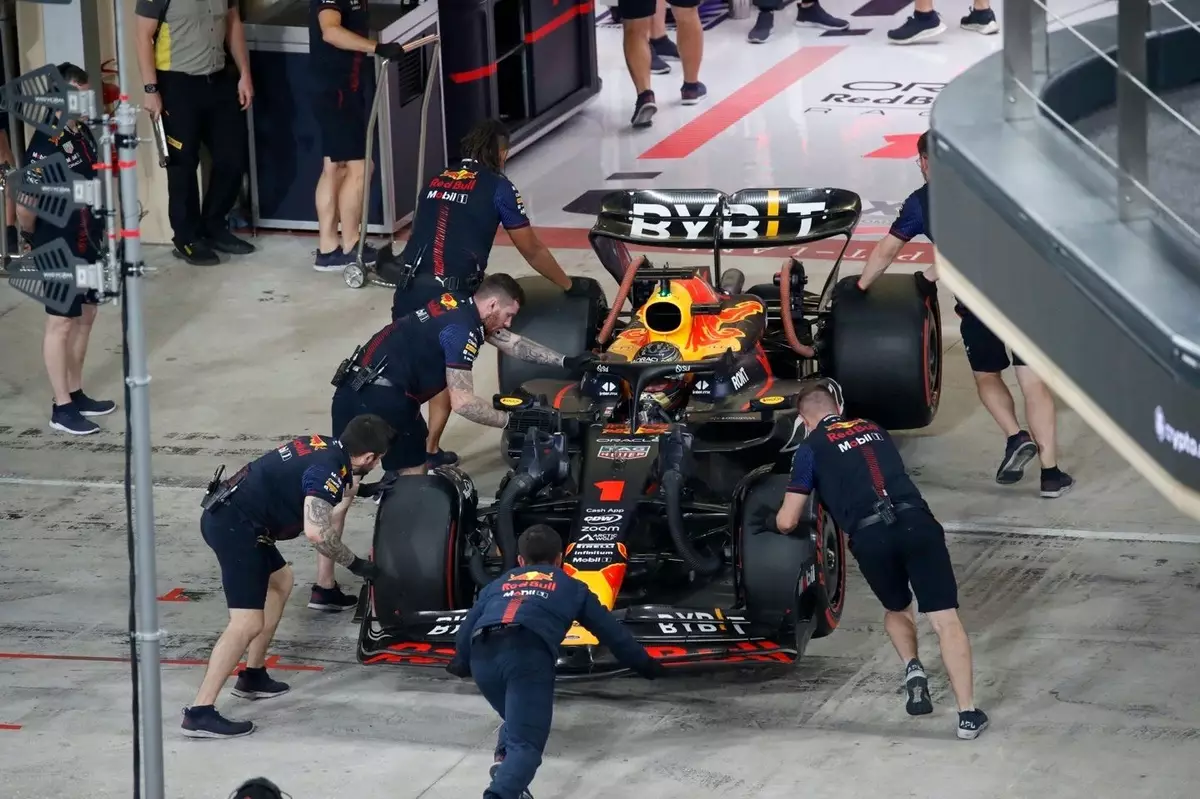The Controversy of Ride Height Adjustment in Formula 1: Red Bull Under the Microscope
Hey there, fellow motorsport enthusiast! If you’re anything like me, you’re probably captivated by the thrilling world of Formula 1 racing. It’s a sport where every fraction of a second counts, and teams are constantly pushing the limits of technology and engineering. But with innovation comes scrutiny, and recently, Red Bull Racing has found itself at the center of a controversy regarding ride height adjustments. Let’s dive into this fascinating topic and uncover what’s really going on behind the scenes.
I’ve always been amazed by how much precision goes into each car on the F1 grid. The teams work tirelessly to find that competitive edge, and sometimes this leads to debates about whether certain innovations stretch the rules just a bit too far. The latest buzz around Red Bull’s front bib height adjustment has certainly raised eyebrows and sparked discussions among fans and experts alike. As we gear up for more adrenaline-pumping races, let’s explore what this all means for the sport we love.
Key Takeaways
- The controversy revolves around Red Bull’s alleged ride height adjustment mechanism.
- The FIA has introduced new regulations to prevent potential exploitation.
- This issue highlights ongoing tensions between innovation and regulatory compliance in F1.
Understanding the Front Bib Mechanism
So, what exactly is this front bib mechanism everyone is talking about? In simple terms, it’s part of the car’s aerodynamics. The front bib affects downforce and handling, crucial elements that can make or break a race weekend. Allegedly, Red Bull has developed a device that allows them to tweak this component’s height for optimal performance at different stages of a race weekend. While the technical details are complex, the essence lies in how these adjustments might bypass strict parc ferme rules—rules designed to ensure cars remain unchanged from qualifying to race day.

The parc ferme regulations are there to keep things fair by minimizing modifications after qualifying. However, reports suggest that Red Bull’s innovation could allow cockpit adjustments before full assembly for races. This has led to concerns about possible rule breaches. Even though teams must publish certain design details under open-source rules, it’s during the race weekend’s pivotal moments that questions arise about any potential manipulations—and that’s where the integrity of competition gets tested.
FIA’s Response to Concerns
With suspicions mounting from rival teams, the FIA stepped in to address these concerns head-on. They introduced measures to monitor and prevent ride height manipulations between qualifying sessions and races. These include sealing adjustable devices to detect any unauthorized changes. Although no evidence directly implicates Red Bull in wrongdoing as of now, this increased scrutiny is seen as essential for upholding fairness and competitiveness in Formula 1—a sport that thrives on both.

The conversations between FIA officials and Red Bull during events like the Singapore Grand Prix highlight just how intricate regulatory compliance can be in motorsports. It underscores an ongoing effort to ensure teams play by the rules while accommodating innovative advances in car design. Such dialogues are crucial in maintaining the credibility and spirit of competition central to F1.
Red Bull’s Stance on Allegations
In response to these allegations, Red Bull has firmly denied any wrongdoing, stating that their device is inaccessible once fully assembled for races. Senior team members have emphasized their commitment to dialogue with the FIA for clarity. Their stance suggests a dedication not only to follow regulations but also to push technological boundaries within those confines—an essential aspect of thriving in competitive racing.
The timing of this controversy couldn’t be more critical as championship battles intensify, notably between Red Bull and McLaren. Any perceived advantage could undermine confidence among teams and fans alike. Despite Red Bull’s assurances of compliance, skepticism lingers amidst ongoing discussions about their edge over competitors—a testament to how fiercely contested this championship is shaping up to be.
Final Thoughts
As we continue through another exhilarating F1 season, this controversy could have lasting impacts on how teams approach innovation within regulatory frameworks. It’s vital for all parties involved to foster transparency and trust through clear guidelines while ensuring robust oversight mechanisms are in place by governing bodies like the FIA. At its core, motorsport is about competition built on fairness and ingenuity—values that define Formula 1’s prestige.
Ultimately, striking a balance between performance gains and rule adherence remains one of F1’s greatest challenges moving forward into future seasons. How teams navigate these waters will shape not only individual successes but also preserve what makes this sport so captivating: its relentless pursuit of excellence amid ever-present tensions between technology-driven aspirations versus regulatory boundaries designed for fair play.
Formula 1 Red Bull Racing FIA Regulations Ride Height Adjustment Motorsport Innovation


Leave a Reply